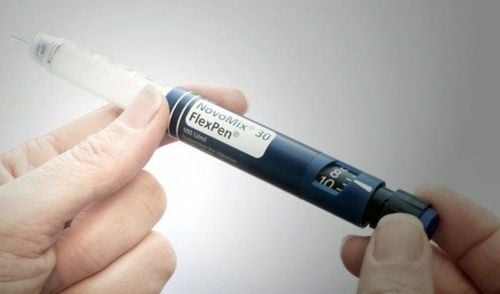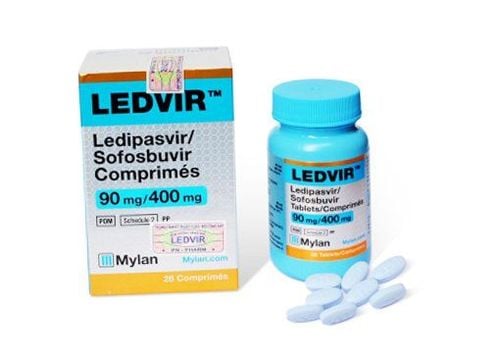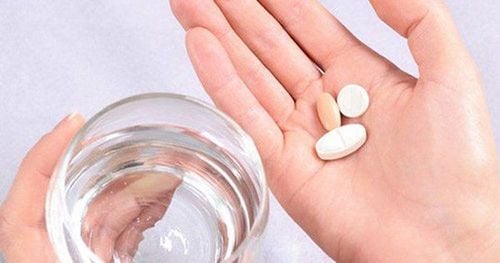This is an automatically translated article.
Leg swelling in the elderly is a common phenomenon, this can be a warning sign of a disease in the elderly. Detecting the cause of foot swelling in the elderly will help you prevent this condition.
1. What is leg swelling in the elderly? Leg edema is a condition in which the legs are bulging, having an increase in size, caused by a buildup of fluid in the tissues of the ankles and feet. This buildup is caused by the small blood vessels of the legs / the capillaries in the legs leaking fluid, resulting in a reaction that retains more sodium and water by the kidneys to make up for the extra fluid.
At this time, the amount of water transported in the body will increase more than usual, causing the capillaries to leak more heavily.
Elderly people with swollen feet often feel heavy and tired, especially when moving. Besides, the leg, ankle or even the whole leg will be deformed. Leg swelling can occur in one leg or both legs, depending on the cause. In the absence of timely treatment, this foot swelling can seriously affect blood circulation, causing skin ulcers.
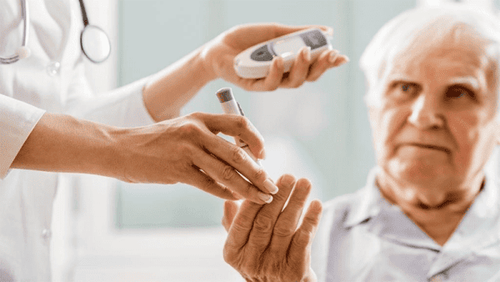
Bệnh đái tháo đường có thể là nguyên nhân bị phù chân ở người già
2. Causes of leg swelling in the elderly Elderly people often have a much higher rate of foot edema than other age groups. This is a consequence of their state of health.
2.1. Cardiovascular problems increase the risk of leg swelling in the elderly Cardiovascular diseases are all characterized by increased blood pressure in the capillaries and veins. This causes the internal muscles to experience swelling. The vast majority of elderly people with heart failure are often accompanied by symptoms of leg edema, making blood circulation and fluid circulation in the body difficult.
2.2. Diabetes in the elderly The longer you have diabetes, the more unwanted complications your body will experience. Therefore, diabetes in the elderly is a risk factor for many other serious health conditions, including leg swelling.
The phenomenon of leg swelling in the elderly due to diabetes comes from the weakening of the leg valve veins, making the pumping action of blood to the heart unable to take place normally, causing blood and fluid to stagnate in the legs.
2.3. Cirrhosis also causes leg edema. Elderly people with cirrhosis will often experience additional complications due to altered liver function. In particular, changes in chemicals and hormones used to regulate fluid will increase blood pressure in the abdomen and legs, causing leg swelling.
2.4. Kidney problems linked to swollen feet in the elderly Another cause of leg swelling in the elderly is kidney problems. As explained by doctors, the kidneys in the elderly body will often have a decline in filtering function and excrete waste out of the body. Therefore, the phenomenon of reabsorption of water, amino acids, and glucose will occur and lead to undesirable leg edema.
In addition, according to doctors, the cause of leg swelling in the elderly can be caused by:
Poor nutrition, high salt or starch Due to trauma. Due to thrombophlebitis or insufficiency of the leg veins. Vitamin B1 deficiency is caused by diet or by a problem with the body's ability to absorb/metabolize nutrients. Due to certain medications being used to treat certain medical conditions. Older people also often sit a lot and stand a lot, and gain more weight than young people: this is also a group of factors that increase the risk of foot edema in the elderly.
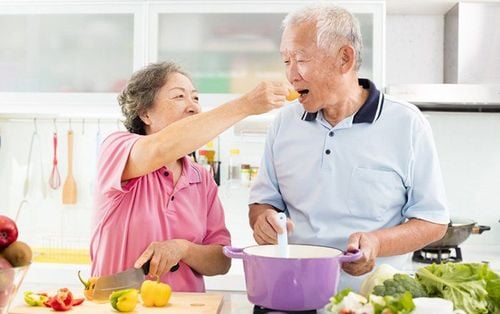
Chế độ ăn uống lành mạnh và hợp lý sẽ hỗ trợ điều trị bệnh phù chân ở người già
3. How to treat leg edema in the elderly? You should treat foot edema in the elderly as soon as you see the mildest signs, because this will help the symptoms of leg edema improve quickly and also minimize unwanted complications from the disease.
Besides medicine, you can support the elderly with the following activities to improve leg edema:
A healthy and reasonable diet, reducing salt in the daily diet. Instead, increase foods such as vegetables, fruits, and limit meat. Make sure the elderly need to drink at least 2 liters of water per day. Make a reasonable exercise regime, try to encourage the elderly to move often. This will help the muscles in the swollen area to quickly pump the excess fluid back to the heart. On average, elderly people should walk about 1-2 hours a day. Limit sitting or standing for too long as this can make the condition worse. Massage helps put pressure on the edematous area, the excess fluid there will be moved around and quickly eliminated. It can be said that the phenomenon of foot swelling in the elderly is a common problem, but not so that it is less dangerous. To limit possible complications, as soon as the slightest sign of leg swelling is detected, see your doctor to determine a treatment/correction for this problem.
Please dial HOTLINE for more information or register for an appointment HERE. Download MyVinmec app to make appointments faster and to manage your bookings easily.




